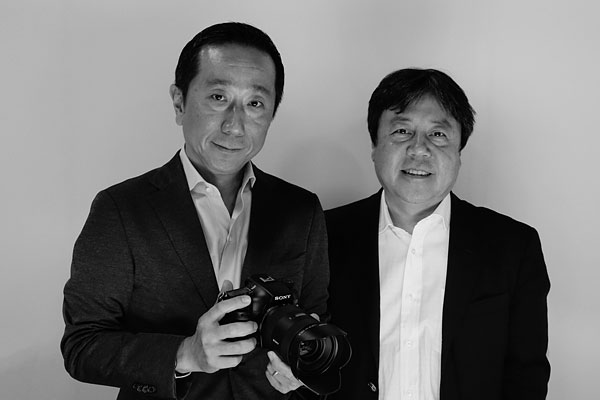image courtesy of Imaging Resource
Imaging Resource managed to get a few key details about the Sony a99 Mark II out of Senior General Manager Kimio Maki that no other outlet has, relating to their new LSI chip and how it might end up in future mirrorless cameras. I am surprised A-Mount is big enough to profit from body sales alone, but it has been around for a long time. It’s a lengthy interview, but you can find the take aways below
Takeaways
As always, it was an interesting conversation with Maki-san. More than any other individual, he’s responsible for Sony’s renaissance in the camera market, going back to the beginning of the E-mount and the RX series. Needless to say, he has a unique viewpoint.
It’s clear that the front-end custom LSI chip is a huge part of the A99 II’s performance, and it was interesting to learn that the idea itself is nothing new – it’s just that the front-end LSI in the A99 II is way more capable than anything that’s gone before it.
There’s been a fair bit of debate in our discussion threads over whether or not the A99 II is intended as a shot across the bow of Nikon and Canon. It’s undoubtedly that on many levels, but Maki-san made it clear that the A99 II is first and foremost all about giving A-mount loyalists a genuinely top-shelf flagship body, after a long wait.
When it comes to lenses, it’s not hard to predict the reactions we’ll see from at least some members of the A-mount community to our impression that there won’t be new A-mount lens designs coming from Sony anytime soon. The idea that people should be content with their current lenses and just stop down to match the resolution of the camera will be seen by some as dismissive and missing the point.
But let’s look at the A-mount lens situation and the impact of the A99 II from a bit broader perspective for a moment. Point by point:
- First off, other aspects of the A99 II are (much) more important than its resolution. Our question about new A-mount lenses to match the resolution of the camera is an obvious one, but it does focus on a very limited aspect of the camera’s capabilities. Resolution is a minor part of the A99’s story; more important to our minds are the dramatically advanced AF system, improved low-light/high-ISO performance, significantly improved IS, high frame rates, and 4K video recording. All of those apply regardless of your lens, and as noted below, there are a lot of great A-mount lenses out there already.
- 42.4 megapixels sounds like a big jump from 24.3 MP, but it’s only a 33% increase in linear resolution. We tend to look at overall pixel counts and mentally equate that with “resolution”. The ability to resolve fine detail actually only increases as the square root of the megapixel number, though, because resolution is measured linearly. The original A99’s images were 6,000 x 4,000, while the A99 II’s are 7,952 x 5,304. The ratio of 7,952/6,000 is 1.325, or roughly a 33% increase
- There’s a huge range of A-mount lenses already on the market, many of them very good. In fact, one of the biggest criticisms Sony has faced with their E-mount system is that the lens lineup for it doesn’t come close to that for A-mount. So that’s where it would make the most sense for Sony to apply their lens-design budget, vs making incremental improvements to many already-good existing models.
- Others are releasing very high performance, modern-design lenses for A-mount. Thanks to the efforts of Sigma, Tamron and others, there are really exceptional new lenses available in A-mount. From Sigma, you have the extraordinary 35mm and 50mm f/1.4 Art primes, and the 24-105mm f/4 Art zoom. Tamron offers their excellent 35/45/85 f/1.8 primes, and just announced an update to their highly-regarded 150-600mm f/5-6.3 super-tele zoom.
Overall, the Sony A99 II looks to us like an incredible advancement (as always, though, withholding judgment until we can get our hands on a test sample). And Maki-san was as always straightforward, direct, and highly informative, in answer to our questions.
You can read the complete article at Image Resources
